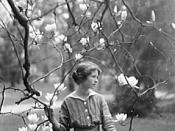Carpe Diem
Tichborne's Elegy by Chidiock Tichborne and Sonnet 115 by Edna St. Vincent Millay are two romantic poems that use nature-imagery as a metaphoric expression. The events inspired to write these poems were the loss of a loved one and the loss of one's own life. Even though the poems are two totally different situations, they both express the importance and similar outcomes of life and how it is relative to nature.
In Tichborne's Elegy, nature is used to give the alternative, yet dreary outcomes in the speakers life. "My prime of youth is but a frost of cares" defines that the prime of his youth is cold and lost forever. The speakers life turned from a golden crop of corn; meaning his life was once prosperous, into a field of worthless weeds. In comparison from the speaker to a tree, the tree is strong and able with green leaves, but has no fruit to accompany his now empty life.
The surprising thing about all those outcomes in his life, is that when the he had that "prosperous" life, he never took advantage of it.
The nature-imagery of Sonnet 115 is glamorized by a romantic relationship being a beautiful growing flower. The alliance between the two lovers blossomed from a bud into a flower; a symbol of love. Although her love was a flower, it was over before it started. The cold frost of winter and the winds of autumn are images of the speakers past unsuccessful relationships. Through experiencing these past "seasons", the speaker thinks she has suffered the brunt of what meaningless relationships have to offer.
"I only hoped, with the mild hope of all who watch the leaf take shape upon the tree" expresses the hope inside the narrator that some man will see her real...


